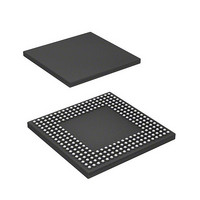HD6417720BP133BV Renesas Electronics America, HD6417720BP133BV Datasheet - Page 326

HD6417720BP133BV
Manufacturer Part Number
HD6417720BP133BV
Description
SH3-DSP, WITH USB AND LCDC, PB-F
Manufacturer
Renesas Electronics America
Series
SuperH® SH7700r
Datasheet
1.R8A77210C133BAV.pdf
(1478 pages)
Specifications of HD6417720BP133BV
Core Processor
SH-3 DSP
Core Size
32-Bit
Speed
133MHz
Connectivity
FIFO, I²C, IrDA, MMC, SCI, SD, SIO, SIM, USB
Peripherals
DMA, LCD, POR, WDT
Number Of I /o
117
Program Memory Type
ROMless
Ram Size
16K x 8
Voltage - Supply (vcc/vdd)
1.4 V ~ 1.6 V
Data Converters
A/D 4x10b; D/A 2x8b
Oscillator Type
Internal
Operating Temperature
-20°C ~ 75°C
Package / Case
256-BGA
Lead Free Status / RoHS Status
Lead free / RoHS Compliant
Eeprom Size
-
Program Memory Size
-
- Current page: 326 of 1478
- Download datasheet (10Mb)
Section 8 Interrupt Controller (INTC)
8.4
There are four types of interrupt sources: NMI, IRQ, IRL, and on-chip peripheral modules. Each
interrupt has a priority level (0 to 16), with 1 the lowest and 16 the highest. Priority level 0 masks
an interrupt, so the interrupt request is ignored.
8.4.1
The NMI interrupt has the highest priority level of 16. When the BLMSK bit in the interrupt
control register 1 (ICR1) is 1 or the BL bit in the status register (SR) is 0, NMI interrupts are
accepted if the MAI bit in ICR1 is 0. NMI interrupts are edge-detected. In sleep or standby mode,
the interrupt is accepted regardless of the BL setting. The NMI edge select bit (NMIE) in the
interrupt control register 0 (ICR0) is used to select either rising or falling edge detection.
When using edge-input detection for NMI interrupts, a pulse width of at least two Pφ cycles
(peripheral clock) is necessary. NMI interrupt exception handling does not affect the interrupt
mask bits (I3 to I0) in the status register (SR). When the BL bit is 1, only an NMI interrupt is
accepted if the BLMSK bit in ICR1 is 1.
It is possible to wake the chip up from sleep mode or standby mode with an NMI interrupt.
8.4.2
IRQ interrupts are input by level or edge from pins IRQ0 to IRQ5. The priority level can be set by
interrupt priority registers C and D (IPRC and IPRD) in a range from 0 to 15.
When using edge-sensing for IRQ interrupts, clear the interrupt source by having software read 1
from the corresponding bit in IRR0, then write 0 to the bit.
When ICR1 is rewritten, IRQ interrupts may be mistakenly detected, depending on the IRQ pin
states. To prevent this, rewrite the register while interrupts are masked, then release the mask after
clearing the illegal interrupt by reading the interrupt request register 0 (IRR0) and writing 0 to
IRR0.
Edge input interrupt detection requires input of a pulse width of more than two cycles on a Pφ
clock basis.
When using level-sensing for IRQ interrupts, the pin levels must be retained until the CPU
samples the pins. Therefore, the interrupt source must be cleared by the interrupt handler.
The interrupt mask bits (I3 to I0) in the status register (SR) are not affected by IRQ interrupt
handling. IRQ interrupts specified for edge detection can be used to recover from a standby state
Page 266 of 1414
Interrupt Sources
NMI Interrupt
IRQ Interrupts
SH7720 Group, SH7721 Group
R01UH0083EJ0400 Rev. 4.00
Sep 21, 2010
Related parts for HD6417720BP133BV
Image
Part Number
Description
Manufacturer
Datasheet
Request
R

Part Number:
Description:
KIT STARTER FOR M16C/29
Manufacturer:
Renesas Electronics America
Datasheet:

Part Number:
Description:
KIT STARTER FOR R8C/2D
Manufacturer:
Renesas Electronics America
Datasheet:

Part Number:
Description:
R0K33062P STARTER KIT
Manufacturer:
Renesas Electronics America
Datasheet:

Part Number:
Description:
KIT STARTER FOR R8C/23 E8A
Manufacturer:
Renesas Electronics America
Datasheet:

Part Number:
Description:
KIT STARTER FOR R8C/25
Manufacturer:
Renesas Electronics America
Datasheet:

Part Number:
Description:
KIT STARTER H8S2456 SHARPE DSPLY
Manufacturer:
Renesas Electronics America
Datasheet:

Part Number:
Description:
KIT STARTER FOR R8C38C
Manufacturer:
Renesas Electronics America
Datasheet:

Part Number:
Description:
KIT STARTER FOR R8C35C
Manufacturer:
Renesas Electronics America
Datasheet:

Part Number:
Description:
KIT STARTER FOR R8CL3AC+LCD APPS
Manufacturer:
Renesas Electronics America
Datasheet:

Part Number:
Description:
KIT STARTER FOR RX610
Manufacturer:
Renesas Electronics America
Datasheet:

Part Number:
Description:
KIT STARTER FOR R32C/118
Manufacturer:
Renesas Electronics America
Datasheet:

Part Number:
Description:
KIT DEV RSK-R8C/26-29
Manufacturer:
Renesas Electronics America
Datasheet:

Part Number:
Description:
KIT STARTER FOR SH7124
Manufacturer:
Renesas Electronics America
Datasheet:

Part Number:
Description:
KIT STARTER FOR H8SX/1622
Manufacturer:
Renesas Electronics America
Datasheet:

Part Number:
Description:
KIT DEV FOR SH7203
Manufacturer:
Renesas Electronics America
Datasheet:










